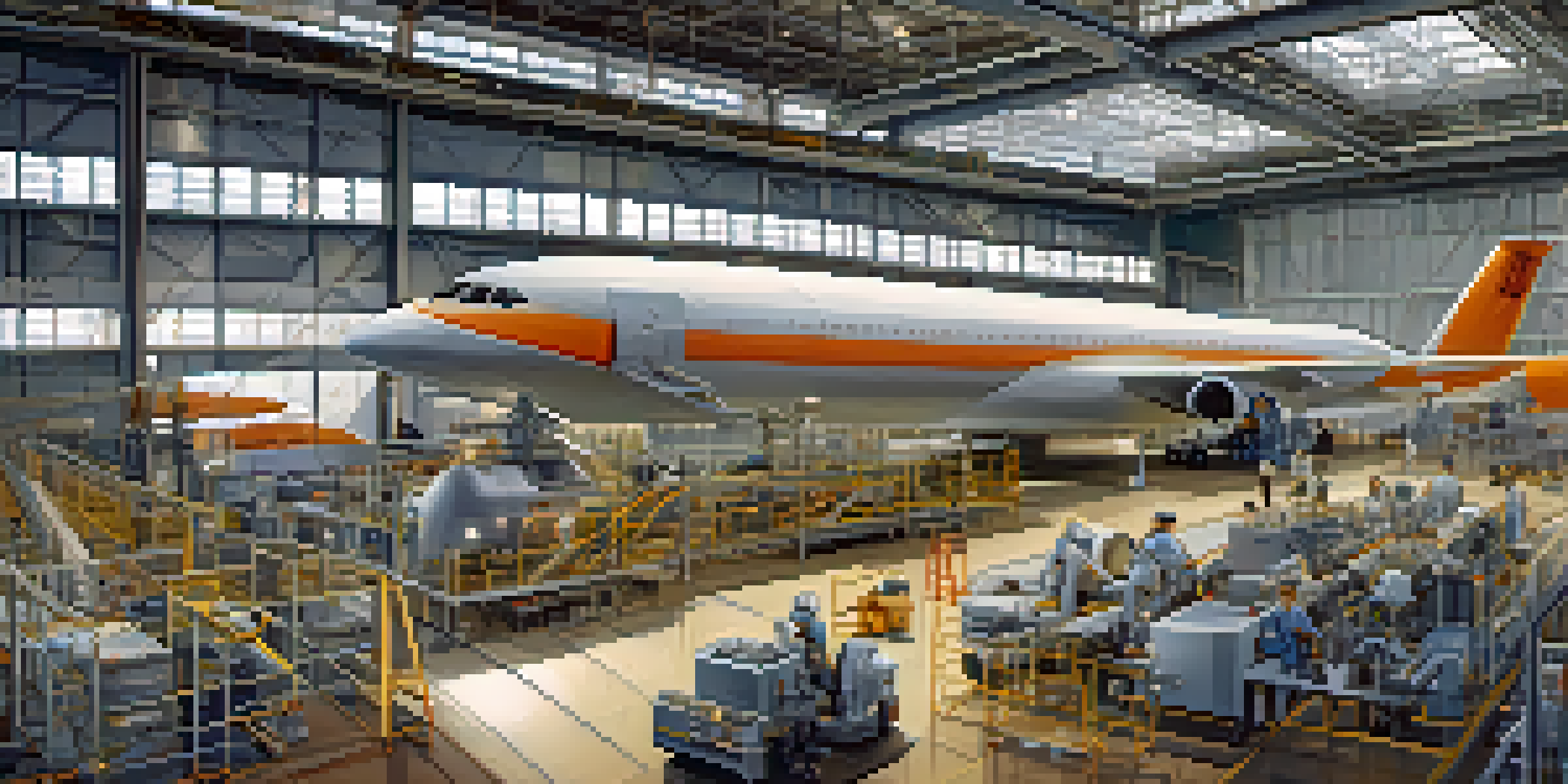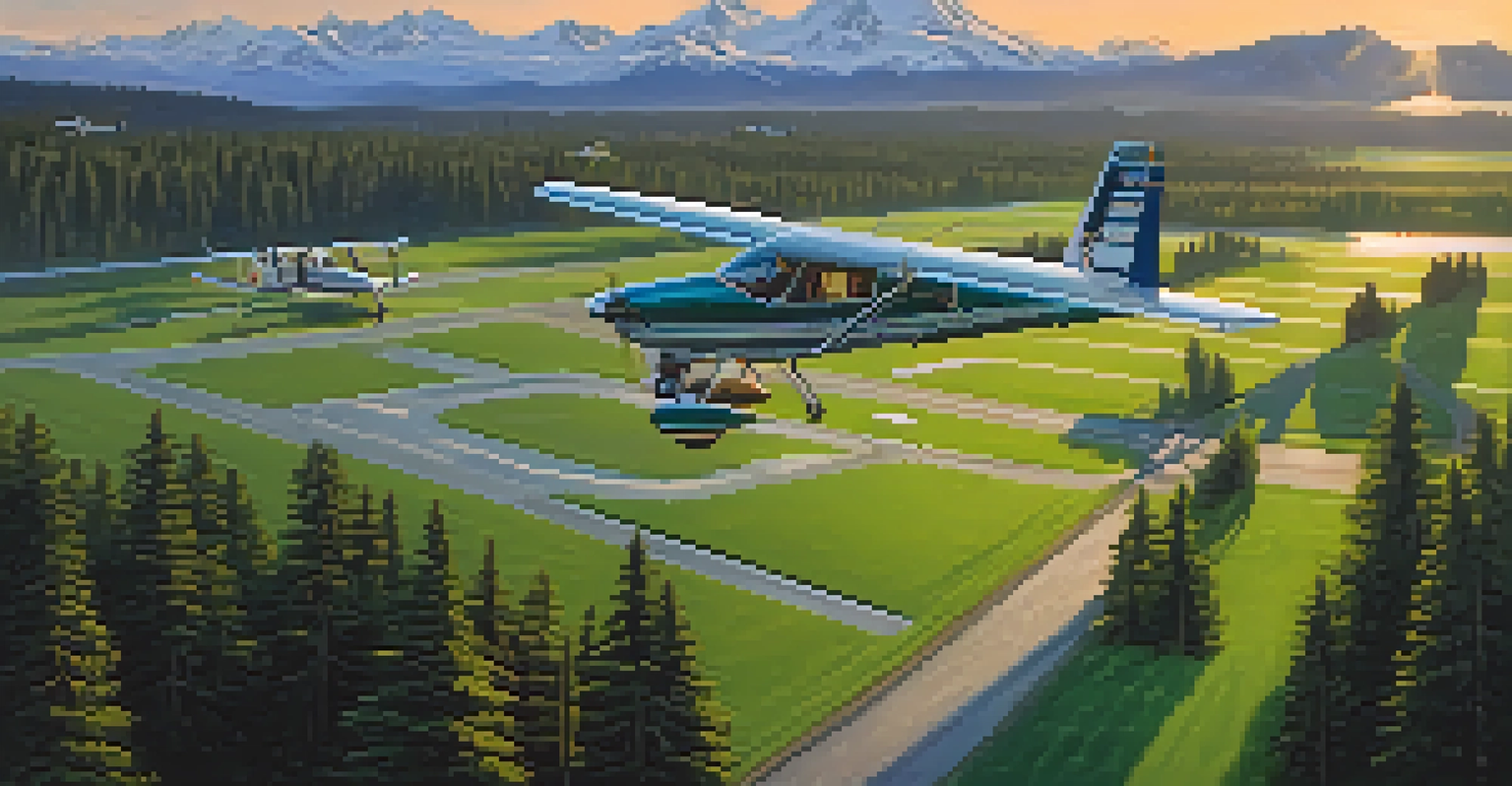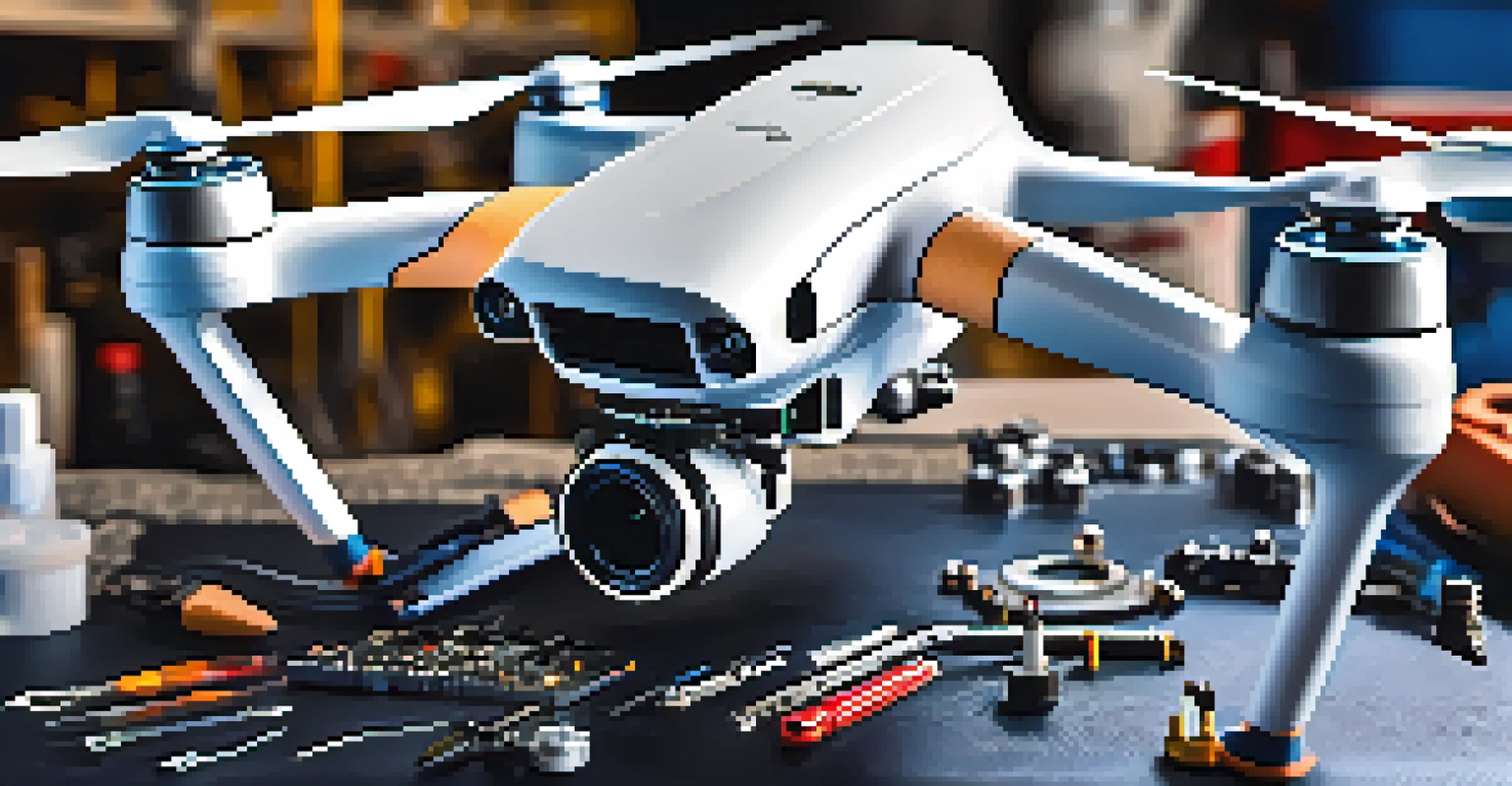Aerospace Industry: Key Player in Washington's Economic Scene

An Overview of Washington's Aerospace Industry Landscape
Washington state has long been synonymous with aerospace, thanks in large part to major players like Boeing. The state's strategic location along the West Coast provides access to international markets, enhancing its position as a global aerospace hub. Beyond Boeing, a network of suppliers, manufacturers, and service providers contribute significantly to the local economy.
The aerospace industry is a critical component of our economy, driving innovation and creating jobs that support families and communities across Washington.
In the Pacific Northwest, you'll find a thriving ecosystem that supports everything from aircraft manufacturing to advanced research and development. This diverse industry landscape not only bolsters job creation but also fosters innovation across various sectors. As a result, the aerospace industry is more than just a segment of Washington's economy; it’s a driving force.
Moreover, with a focus on sustainability and green technologies, Washington's aerospace sector is poised for growth. Companies are increasingly investing in eco-friendly practices, positioning the state as a leader in sustainable aviation solutions. This commitment not only benefits local economies but also has a global impact.
The Economic Impact of Aerospace on Washington State
The aerospace industry is a significant contributor to Washington’s economy, providing thousands of jobs and generating billions in revenue. According to recent statistics, the sector employs over 130,000 individuals directly, while additional jobs are created in supporting industries. This multiplier effect underscores the aerospace industry's role as a cornerstone of the local workforce.

In addition to job creation, the aerospace sector drives substantial economic output. It contributes approximately $60 billion to the state’s economy, making it one of the largest sectors in Washington. These figures highlight not only the importance of aerospace but also the ripple effect it has on related industries, from manufacturing to logistics.
Aerospace Drives Washington's Economy
The aerospace industry significantly contributes to Washington's economy, employing over 130,000 people and generating approximately $60 billion in economic output.
Furthermore, the state's investment in aerospace education and training programs ensures a skilled workforce ready to meet evolving industry demands. By partnering with local universities and vocational schools, Washington is nurturing the next generation of aerospace professionals, further solidifying its economic foundation.
Key Players in Washington’s Aerospace Sector
While Boeing often takes the spotlight, numerous other companies play vital roles in Washington's aerospace ecosystem. Firms like Spirit AeroSystems and Triumph Group specialize in manufacturing key components, while smaller companies focus on niche markets such as drone technology and space exploration. This diversity enriches the industry and enhances its resilience.
Sustainability is not just a trend; it's a necessity for the future of aviation. Washington is committed to leading the charge in developing eco-friendly technologies.
Additionally, the presence of research institutions like the University of Washington and Washington State University fosters innovation. These institutions collaborate with industry leaders to advance aerospace technologies, making Washington a hotbed for research and development. The synergy between academia and industry propels the state forward in the aerospace arena.
Moreover, the aerospace supply chain is robust, with a variety of businesses providing parts, services, and support. This interconnected network not only boosts economic activity but also encourages collaboration, enabling rapid advancements and improvements in aerospace technology.
Challenges Facing Washington's Aerospace Industry
Despite its strengths, Washington's aerospace industry faces several challenges that could impact its growth. Supply chain disruptions, exacerbated by recent global events, have caused delays and increased costs for manufacturers. Addressing these challenges will require innovative solutions and strong collaboration among industry stakeholders.
Additionally, competition from other states and countries is intensifying. As global demand for aerospace products grows, other regions are aggressively investing in their aerospace capabilities. Washington must remain vigilant and adapt to this competitive landscape to retain its leadership position.
Innovation Fuels Industry Growth
Washington's aerospace sector thrives on innovation, focusing on technologies like electric propulsion and advanced manufacturing to enhance efficiency and sustainability.
Furthermore, workforce shortages in skilled trades present another challenge. As many seasoned professionals retire, there's an urgent need for training and attracting new talent to the industry. Initiatives aimed at promoting aerospace careers among younger generations will be crucial to ensuring a steady pipeline of workers.
The Role of Innovation in Aerospace
Innovation is the lifeblood of the aerospace industry, driving advancements that shape the future of air travel. In Washington, companies are increasingly focusing on developing cutting-edge technologies such as electric propulsion and autonomous flight systems. These innovations not only enhance performance but also address environmental concerns.
Moreover, the state's commitment to research and development has established it as a leader in aerospace innovation. Collaborations between private companies, government agencies, and academic institutions fuel breakthroughs that can redefine the industry. As new technologies emerge, Washington is well-positioned to lead the charge.
Additionally, the emphasis on innovation extends to manufacturing processes. Companies are adopting advanced manufacturing techniques, such as additive manufacturing, to streamline production and improve efficiency. These methods reduce waste and lower costs, making Washington's aerospace industry more competitive on a global scale.
Sustainability Efforts in the Aerospace Sector
Sustainability has become a focal point for the aerospace industry, with Washington leading the way in implementing eco-friendly practices. Companies are investing in research to develop sustainable aviation fuels and improve aircraft efficiency. This commitment not only meets regulatory demands but also aligns with growing consumer expectations for greener travel options.
Additionally, Washington's aerospace sector is exploring innovative designs that reduce carbon footprints. From lightweight materials to more efficient engines, the focus on sustainability is transforming how aircraft are built and operated. This proactive approach is crucial for maintaining competitiveness in a rapidly changing market.
Sustainability is Key for Future
The commitment to sustainability in Washington's aerospace industry is transforming practices and designs, ensuring competitiveness in an increasingly eco-conscious market.
Furthermore, partnerships between industry leaders and environmental organizations are fostering a culture of sustainability. By collaborating on initiatives that promote responsible practices, Washington's aerospace sector is not only addressing environmental concerns but also paving the way for a more sustainable future in aviation.
The Future of Aerospace in Washington
Looking ahead, the future of Washington's aerospace industry appears promising, fueled by a combination of innovation and strategic investments. With ongoing advancements in technology and a strong workforce, the state is poised to remain at the forefront of the aerospace sector. Companies are actively exploring new markets and opportunities, particularly in space exploration and commercial aviation.
Moreover, as global demand for air travel continues to rise, Washington's aerospace industry is well-positioned to meet these needs. The focus on sustainability and innovation will play a significant role in attracting investments and maintaining competitiveness. The state's commitment to fostering a collaborative ecosystem will further enhance its standing in the global aerospace arena.

Ultimately, the aerospace industry will continue to be a key player in Washington's economic landscape. By embracing challenges and capitalizing on opportunities, the state can ensure that its aerospace sector not only survives but thrives in the years to come.